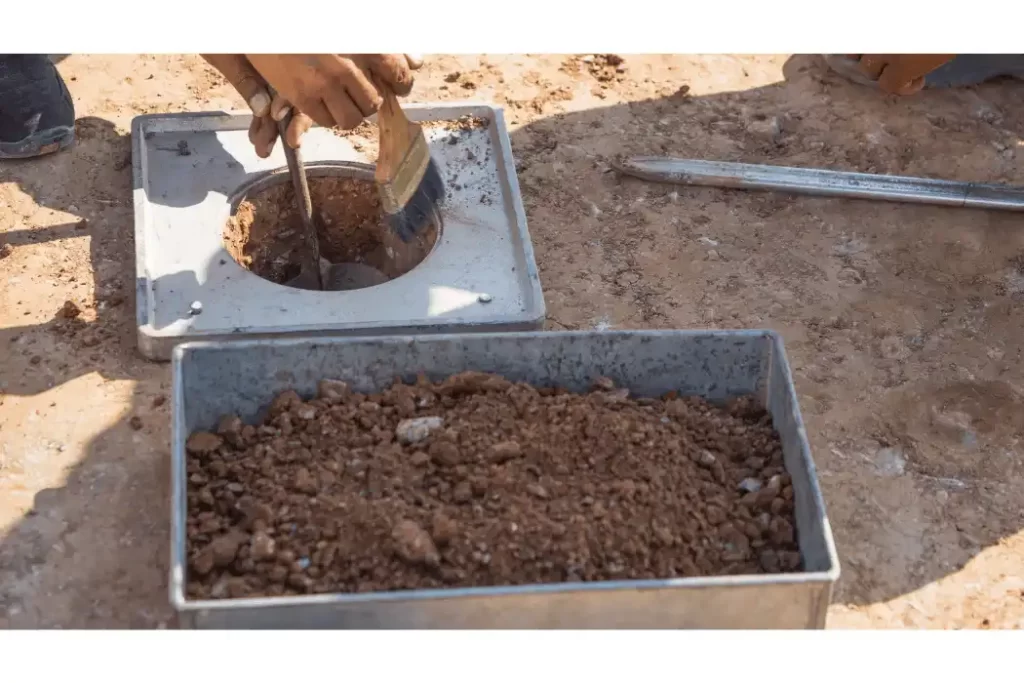Soil density plays a crucial role in various engineering and construction projects. It is essential to understand the dry density of soil as it affects the stability and load-bearing capacity of structures. In this article, we will delve into the methods used to determine the dry density of soil and explore its applications in different fields.
In the realm of civil engineering and geotechnical studies, soil properties play a fundamental role in determining the suitability and safety of construction projects. One of the critical aspects is soil density, which directly impacts how soil behaves under various loads and conditions. Dry density of soil is a crucial geotechnical parameter, and understanding its significance as a source of knowledge is essential for engineering and construction projects.
Taking into account this principle (Equations 17.2 and 17.3), the overall or dry density is characterized as the proportion of the solid mass to the complete volume of soil. Standard measurements of the dry or overall density for the majority of soils generally fall in the range of 1.1–1.6 g/cm³. A typical value would be approximately 1.3 g/cm³ for loamy soil.
Understanding Soil Density
Soil density refers to the mass of soil particles per unit volume. It is typically expressed in grams per cubic centimeter (g/cm³) or kilograms per cubic meter (kg/m³). Soil density is influenced by factors such as particle size, moisture content, compaction efforts, and voids within the soil structure.

Importance of Dry Density
The dry density of soil is particularly important as it represents the soil’s density when all moisture has been removed. This value is crucial in determining the soil’s bearing capacity and stability. Engineers use this data to design foundations, embankments, and other structures that rely on the soil’s ability to withstand loads without settling or shifting.
Methods to Measure Dry Density
Several methods are used to measure the dry density of soil:
Core Cutter Method
This method involves taking a cylindrical soil sample using a core cutter. The sample is weighed and then dried in an oven to remove all moisture. The dry weight is then divided by the volume of the core cutter to obtain the dry density.
Sand Replacement Method
In this method, a hole is dug in the ground, and the soil is excavated and weighed. The hole is then filled with a known volume of sand, and the weight of the sand is measured. The dry density is calculated by comparing the weights of the soil and the sand.
Balloon Method
This unique method involves immersing the soil sample in water and measuring the volume of air displaced by the sample. The sample is then dried, and its dry weight is divided by the volume of air displaced to obtain the dry density.
Nuclear Density Gauge Method
Using a nuclear density gauge, the moisture content and density of the soil can be determined simultaneously. The gauge emits gamma radiation, which interacts with the soil particles. By measuring the radiation backscatter, the device calculates the soil density.
Factors Affecting Dry Density
Several factors influence the dry density of soil:
Soil Type and Composition
Different types of soil have varying densities. For instance, granular soils tend to have lower densities compared to cohesive soils.
Moisture Content
The moisture content of soil significantly affects its density. Compaction efforts on wet soil can result in different densities compared to dry soil.
Compaction Efforts
The method and degree of compaction applied to the soil during testing or construction can impact its dry density. Well-compacted soil generally has higher density values.
Applications of Dry Density Measurements
The knowledge of dry density of soil finds applications in various fields:
Construction Industry
Engineers use dry density data to design stable foundations, retaining walls, and other structures. It ensures that the soil beneath the construction can support the load without excessive settlement.
Road and Pavement Design
In road construction, knowing the dry density helps in designing durable and long-lasting pavements. It also aids in determining the appropriate compaction level for the subgrade soil.
Agriculture and Land Management
Farmers and land managers use soil density information to assess soil compaction. This helps in determining crop suitability and planning irrigation practices.
Environmental Studies
Dry density data is utilized in environmental studies to assess soil erosion potential, groundwater recharge rates, and land stability in areas prone to natural disasters.
Choosing the Right Method
Selecting the appropriate method for measuring dry density depends on factors such as the soil type, available equipment, and the desired level of accuracy.
Best Practices for Accurate Measurements
To ensure accurate results, professionals should follow these practices:
- Take representative soil samples
- Use calibrated equipment
- Perform tests under controlled conditions
- Consider the moisture-density relationship
Interpreting and Using Dry Density Data
Engineers and researchers analyze dry density data alongside moisture content to understand soil behavior. This information helps in making informed decisions about construction methods, foundation design, and structural integrity.
Conclusion
The dry density of soil is a critical parameter that impacts various engineering and environmental aspects. Understanding the methods used to measure it and its applications across different sectors enables us to create safe and efficient structures, ensure sustainable agriculture, and conduct comprehensive environmental assessments.
FAQs
What is soil density?
Soil density refers to the mass of soil per unit volume and influences its load-bearing capacity and stability.
Why is dry density important in construction?
Dry density helps engineers design structures that can withstand loads without settling, ensuring stability and safety.
Which method is best for measuring dry density?
The choice of method depends on factors like soil type and equipment availability. Common methods include core cutter, sand replacement, and nuclear density gauge.
How does soil moisture affect dry density?
Moisture content significantly impacts soil density, as compacting wet soil can result in different densities compared to dry soil.
What are the applications of dry density data?
Dry density data finds applications in construction, road design, agriculture, and environmental studies, helping in making informed decisions in these fields.


